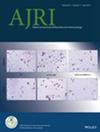Exploring Therapeutic Targets and Drugs for Recurrent Spontaneous Abortion by M1 Macrophage Exosome Sequencing Analysis: A Bioinformatic and Vitro Study
Abstract
Problem
Recurrent spontaneous abortion (RSA) is defined as two or more consecutive spontaneous abortions in the first 24 weeks of pregnancy. However, the detailed molecular mechanisms behind RSA remain unclear.
Method of Study
We used bioinformatics and systems biology approaches to analyze the underlying molecular mechanisms to provide new insights into the biology of M1 macrophage exosome differentially expressed genes (DEGs) in RSA patients and to identify potential drugs to treat RSA. The trophoblast (HTR-8) was co-cultured with the M1 macrophage exosomes induced by THP-1, and the cell model was constructed for transcriptome sequencing analysis and data source construction. Functional enrichment and pathway analysis of DEGs among the three groups were performed. In addition, differential expression of key genes was verified by RT-qPCR.
Results
We obtained 172 DEGs from the sequencing data. Metabolic and immune-related pathways and functions are the main pathways of its enrichment. FOCX1, GATA2, YY1, TFAP2A, MEFF2A, and STAT3 are the major transcription factors (TFs) of M1 macrophage exosomes in RSA. Hsa-mir-106b-5p, hsa-mir-149-3p, and hsa-mir-520a-3p are associated with RSA. Finally, the DEGS-disease and DEGS-drug interaction networks are predicted. Gene Ontology (GO) and Kyoto Genome Encyclopedia (KEGG) enrichment analysis revealed clusters and targets associated with maternal and fetal interface immune tolerance in RSA M1 macrophage exosomes.
Conclusions
The candidate targets and drugs obtained from M1-type macrophage exosomes in this study may contribute to the effective treatment of RSA.

 求助内容:
求助内容: 应助结果提醒方式:
应助结果提醒方式:


